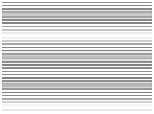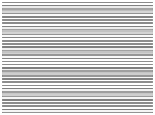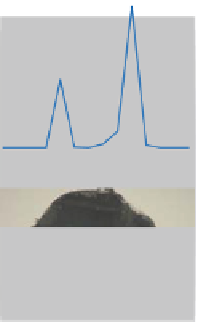Information Technology Reference
In-Depth Information
conducted. In figure 12 the occurred tool wear on the full profile blade is shown. It is
visible that the maximum tool wear is located at the corner radius of the outside blade
(OB). Here a chipping is observed. The tool wear at the inside blade is about 50% of
the maximum wear. Former investigations contain the tool wear analysis of this
process, but did not show sufficient results. Here the tool wear characteristic value K
G
is used for the first time to identify the tool with the highest amount of tool wear. A
comparison of the real tool wear in generating process with the calculated characteris-
tic value K
G
is presented in figure 12. The calculation results correlate well with the
tool wear from the cutting trials. In addition not only the location of the tool wear
correlates well with the characteristic value K
G
but also the amount of tool wear.
Pinion Manufacturing (Process 4)
Full Profile Blade
250
toe
125
heel
IB
0
IB
Tip
OB
T
OB
rake face
Fig. 12.
Tool wear analysis of pinion manufacturing
The presented results show that now it is possible to analyze the occurring tool
wear with only one characteristic value. Thus, it is not necessary anymore to analyze
the cutting process regarding tool wear by applying and analyzing many different
characteristic values, like the chip thickness or the working tool angles.
4.3
Identification of Optimal Tool Concept
Within this report different tool concepts have been presented. Process 1 (full profile
blades) and 3 (half profile blades) differ in the tool concept. The manufactured geo-
metry of the ring gear and the productivity of the process is identical. This means e.g.
that the cutting and feed velocity is the same and the number of blade groups of the
full profile concept is reduced to 50%. This reduction is possible, because the number
of active cutting edges is the same for 14 half profile blades and 7 full profile blades.
Now it is interesting to know which concept is the best for the presented applica-
tion. A comparison of process 1 (full profile blades) and process 3 (half profile
blades) by means of the characteristic value K
G
is done, see figure 13.


































Search WWH ::

Custom Search